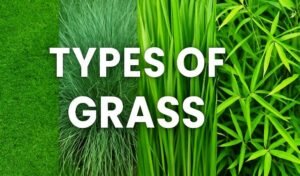The Red Sand Boa Snake is one of the most fascinating reptiles found in India and nearby regions. This snake is especially known for its reddish-brown appearance and unique tail that looks like a second head. It belongs to the boa family and is non-venomous, which makes it different from many other snakes in the wild. Locally, it’s also known for being a part of several superstitions and myths, often resulting in illegal trade. However, in reality, it plays an important role in controlling the rodent population in its habitat. Red Sand Boa snakes are harmless to humans and are very secretive and shy by nature. This snake is nocturnal and burrows itself in sandy soils, rarely seen during the daytime. At wildlifenest.com, we believe in spreading awareness about such incredible species to help preserve them and bust the myths surrounding them.

Red Sand Boa Snake
Species Profile of Red Sand Boa Snake
| Parameter | Details |
|---|---|
| Snake Name | Red Sand Boa Snake |
| Scientific Name | Eryx johnii |
| Wild Life Protection Act Schedule | Schedule IV (India) |
| Regional Names | Lal Do-muha (Hindi), Yerra Paambu (Telugu), Semputhali (Tamil), Lal Saanp (Marathi), etc. |
| Physical Description | Thick, cylindrical body, reddish to brown color, blunt tail resembling a second head. |
| Habitat | Dry, semi-arid regions, sandy soil, scrub forests, grasslands. |
| Diet | Rodents, small birds, lizards, amphibians. |
| Behaviour | Nocturnal, burrowing, shy, non-aggressive. |
| Venomous or Non-Venomous | Non-venomous |
| Venom Type | Not applicable |
| Venom Effects on Prey | Not applicable |
| Venom Effects on Humans | Not applicable |
| Common or Rare Species | Rare in wild, commonly traded illegally |
| Life Span | Up to 20 years in captivity |
| Mating & Reproduction | Ovoviviparous (gives birth to live young), mating in monsoon, 4–9 offspring |
Introduction to Snakes of Red Sand Boa
Red Sand Boas belong to a group of snakes that are quite different from their venomous relatives. Anatomically, they are thick-bodied with small eyes and scales that make it easy to burrow into the ground. The tail of the Red Sand Boa is blunt and looks much like its head, which is why it’s also called the “two-headed snake” in local language. Unlike most snakes, they lack heat-sensing pits and rely on vibration and smell to hunt.
Snakes like the Red Sand Boa play a critical role in the ecosystem. They help control pest populations like rats and mice, which in turn protects crops and stored grains. Despite being misunderstood, snakes are vital for maintaining ecological balance. Unfortunately, due to myths like bringing wealth or healing, Red Sand Boas are victims of illegal pet trade and poaching. It’s important to protect them and spread awareness.
Common myths around snakes include ideas like all snakes are venomous, snakes chase humans, or Red Sand Boas can make someone rich. These are completely untrue. Education and awareness are the keys to ending these dangerous beliefs.
Habitat and Distribution
Red Sand Boa snakes are generally found in dry, sandy, and semi-arid areas. They prefer to live underground or beneath loose stones and leaves where they can stay hidden. These snakes are most commonly seen in regions with loose soil that supports easy burrowing. They avoid dense forests and water-logged areas.
This species is distributed mainly in the Indian subcontinent. They are found across India, including the states of Maharashtra, Andhra Pradesh, Tamil Nadu, Rajasthan, Gujarat, and parts of Pakistan and Iran. The snake’s ability to stay underground helps it survive even in human-inhabited areas unnoticed. It prefers isolated, open areas with little human interference. Due to habitat destruction and illegal collection, their numbers in the wild have decreased.
| Habitat Type | Presence of Red Sand Boa |
| Forests | Rare |
| Deserts | Common (sandy soil) |
| Grasslands | Common |
| Scrublands | Common |
| Wetlands | Absent |
| Agricultural Fields | Sometimes (when hunting rodents) |
Snake Behaviour
The Red Sand Boa is primarily nocturnal, meaning it is active at night. During the daytime, it stays hidden underground or under natural debris. These snakes are ambush predators, patiently waiting for their prey such as rodents or lizards to come near before striking and constricting them. Their constriction technique is very effective – they wrap their muscular body around the prey and suffocate it.
In terms of reproduction, Red Sand Boas are ovoviviparous. This means they do not lay eggs but give birth to live young. Mating usually happens in the monsoon season. After a gestation period of a few months, the female gives birth to 4 to 9 fully developed young snakes.
To defend themselves, they don’t rely on venom but on camouflage and burrowing. Their sandy-colored body helps them blend into the surroundings, and their unique tail confuses predators by resembling a second head. They are non-aggressive and prefer fleeing over confrontation, making them harmless to humans.
First Aid and Medical Treatment for Red Sand Boa Snake Bites
Since the Red Sand Boa is non-venomous, it does not pose a threat through bites. However, in rare cases, if it does bite when threatened or mishandled, simple first aid is enough:
- Wash the wound with soap and water to avoid infection.
- Apply an antiseptic cream.
- Keep the area clean and avoid scratching.
- No antivenom is needed as there is no venom.
Still, it’s a good idea to consult a doctor if you are bitten, especially to prevent any infection or allergic reaction.
Global Impact of Red Sand Boa Snake Bites
There is no global medical impact of Red Sand Boa snake bites since they are non-venomous and generally don’t attack humans. However, illegal smuggling and myth-based trade of this snake have international implications in wildlife trafficking. Conservation efforts must focus on halting illegal trade and spreading awareness that this snake is harmless and should remain in the wild.
If You Encounter a Snake on Your Property
- Remain Calm and Assess the Situation: Don’t panic or make sudden movements. The snake is likely scared too.
- Ensure Safety: Keep children and pets away. Do not attempt to catch or harm the snake.
- Identify the Snake (If Possible): From a safe distance, note the color and shape for experts.
- Contact Professional Help: Call local forest officials or snake rescuers immediately.
- Prevent Future Encounters: Seal cracks, clean debris, and control rodent populations.
- Educate Yourself and Others: Learn about local snake species and bust harmful myths.
Tips for Snake Enthusiasts
If you’re passionate about snakes like the Red Sand Boa, always remember that observing them should never harm them. Use binoculars and cameras with zoom lenses to view them in the wild. Do not disturb their natural habitat. Avoid handling snakes unless you’re trained.
For aspiring herpetologists, studying reptile behavior, reading research papers, joining wildlife clubs, and volunteering with conservation organizations are great first steps. Respect for wildlife and understanding of their role in the ecosystem are essential.
Interesting Facts about Red Sand Boa Snake
- The Red Sand Boa’s tail mimics the shape and size of its head, which confuses predators and even prey.
- In some cultures, this snake is believed to bring wealth and prosperity, leading to high levels of illegal trade.
- Unlike most snakes, it gives birth to live babies instead of laying eggs.
- Its skin feels rough and sand-like, helping it blend perfectly into arid environments.
- It uses its body to ‘dig’ into the sand, making underground tunnels where it hides during the day.
- The Red Sand Boa is a master of camouflage and can disappear into its environment within seconds.
- Despite being non-venomous, it can still look quite intimidating due to its thick body and blunt tail.
- They are often mistaken for venomous snakes due to their size and appearance, leading to unnecessary killings.
Frequently Asked Questions (FAQs)
Q1: Is the Red Sand Boa Snake dangerous to humans?
A: Not at all! The Red Sand Boa is a non-venomous and shy snake. It does not attack humans and prefers to stay hidden. If you come across one, it’s best to leave it undisturbed.
Q2: Why is the Red Sand Boa called the “two-headed snake”?
A: Great question! It’s because its tail is blunt and rounded, looking very similar to its head. This feature helps confuse predators and adds to its mystery.
Q3: Where is the Red Sand Boa commonly found?
A: The Red Sand Boa is mainly found in India and nearby countries like Pakistan and Iran. It prefers dry, sandy, and semi-arid regions where it can burrow and stay hidden.
Q4: What does the Red Sand Boa eat?
A: Its diet includes rodents, lizards, small birds, and amphibians. It’s an important natural pest controller, especially in agricultural areas.
Q5: Why is this snake illegally traded?
A: Sadly, due to myths and superstitions—such as the belief that the snake brings wealth or has magical healing powers—Red Sand Boas are often captured and sold illegally. This is a serious issue and harms the snake population.
Q6: Does it bite? What should I do if bitten?
A: While it’s very unlikely, if a Red Sand Boa does bite out of fear, there’s no need to panic. Its bite is not venomous. Just wash the area with soap and water, apply antiseptic, and consult a doctor if needed.
Q7: Can I keep a Red Sand Boa as a pet?
A: No, keeping or trading Red Sand Boas is illegal under the Wildlife Protection Act in India. They are protected wildlife and should remain in their natural habitat.
Q8: How does the Red Sand Boa reproduce?
A: This snake is ovoviviparous—it gives birth to live young rather than laying eggs. Mating usually happens during the monsoon, with 4 to 9 babies born per litter.
Q9: How can I help conserve this species?
A: Start by spreading awareness, never buying or promoting illegal wildlife trade, and supporting local snake rescue and conservation groups. Also, educate others to bust the myths around this amazing creature.
Q10: Where can I learn more about snakes like the Red Sand Boa?
A: You can explore articles and updates on wildlifenest.com. We regularly share information, facts, and conservation news to help people better understand and protect wildlife.
Watch Wildlife Awareness Videos
For more engaging and educational content on snakes and other wild creatures, don’t forget to visit our official YouTube channel: www.youtube.com/@WildlifeNest
Subscribe and explore fascinating wildlife stories, awareness videos, and rare sightings—all brought to you by Wildlife Nest!
Related Snake Species – Explore More on Wildlife Nest
| Snake Species / Topic | Read Article |
|---|---|
| Indian Rat Snake | Read Article |
| Common Sand Boa Snake | Read Article |
| Indian Rock Python | Read Article |
| Two Step Snake | Read Article |
| King Cobra Secrets – Study Breaks 180 Year Myth | Read Article |
| Slender Coral Snake | Read Article |
| The Green Vine Snake – An In-Depth Look | Read Article |
| Common Cat Snake – All Information | Read Article |
| Banded Krait Snake – All Information | Read Article |
| King Cobra – All Information | Read Article |
| Common Krait – All Information | Read Article |
| Russell’s Viper | Read Article |
| Saw Scaled Viper Snake – All Information | Read Article |
| Cobra Snake – All Information | Read Article |
| The Big Four Snakes of India | Read Article |
| What Are Reptiles? | Read Article |
| The Deadliest Venom | Read Article |
| Most Dangerous Snakes in the World | Read Article |
| The Ultimate Guide to Snakes | Read Article |
| History of Snakes – Evolution, Habitats, Survival | Read Article |


